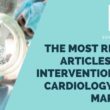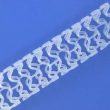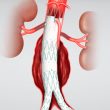Suboptimal fractional flow reserve (FFR) results after stenting only have a moderate impact on clinical hard points but might predict a much higher risk of reintervention. FFR has shown a huge impact on the decision-making process when it comes to revascularizing (or not) a lesion. Its impact after angioplasty has not been fully studied, particularly...
The Most Read Articles in Interventional Cardiology of March
01- Surgeons’ Claim on Low-Risk Patients with Aortic Stenosis Recent randomized trials including low-risk patients showed positive results for transcatheter aortic valve replacement (TAVR) compared with surgical aortic valve replacement. Read more HERE 02- Major Cause of Myocardial Injury by COVID-19 The most common cause of myocardial necrosis in patient undergoing COVID-19 infection is microthrombi. These...
Lower Mortality with Rechanneling vs. Medical Therapy
We had to wait for it, but we have finally seen a benefit in hard endpoints—such as mortality—derived from rechanneling. Patients with chronic total occlusion (CTO) in whom rechanneling was used as initial strategy showed higher survival rated compared with those receiving medical therapy. As initial treatment strategy, rechanneling a CTO did not show any...
Biodegradable Polymer Myth Also Debunked for ACSs
During TCT 2020 a preview of the results of the comparison of drug-eluting stents (DES) with biodegradable-polymer vs. durable-polymer in patients with acute coronary syndrome (ACS) was presented. The fine print and the final paper for HOST-REDUCE-POLYTECH-ACS are now published, and they lower the expectations set on biodegradable polymers. In patients with ACS undergoing angioplasty, biodegradable-polymer...
Surgeons’ Claim on Low-Risk Patients with Aortic Stenosis
Recent randomized trials including low-risk patients showed positive results for transcatheter aortic valve replacement (TAVR) compared with surgical aortic valve replacement. However, surgeons argue that these cases fail to consider patients from daily clinical practice, but rather include a population that has been carefully selected for randomized trials. Patients with non-tricuspid aortic stenosis, with severe...
High Deployment: Also Trending with Balloon Expandable Valves
Conventional implantation of balloon expandable SAPIEN-3 results in a final 70:30 or 80:20 ratio of the valve in the aorta/left ventricular outflow tract. This comes with permanent pacemaker implantation rates of approximately 10%. Higher deployment might translate into lower rates of conduction abnormalities and pacemaker implantation. The study compared a cohort of 1028 consecutive patients; 406...
Cusp Overlap for Higher CoreValve Implantation
Implant depth greater than the length of the membranous septum is an independent predictor of permanent pacemaker implantation. Valve implantation 3 to 5 mm below the aortic annulus in a projection coaxial to the device is recommended. The problem is this is rarely in the annular plane of the valve. Ideal annular plane projection is...
Improvements in COAPT Trial for Functional Mitral Regurgitation
Patients with heart failure and moderate-to-severe secondary mitral regurgitation may benefit from transcatheter mitral valve repair. There are benefits at 3 years, even in hard points such as mortality rate. The COAPT (Cardiovascular Outcomes Assessment of the MitraClip Percutaneous Therapy for Heart Failure Patients with Functional Mitral Regurgitation) trial showed fewer heart failure hospitalizations and...
Solution for Type 1A Endoleaks After Abdominal Endoprosthesis
Proximal type 1 endoleaks after endovascular abdominal aortic aneurysmal repair are challenging to solve, with no existing consensus on the proper solution. This work compared the most radical solution to the problem vs. a more conservative—though still challenging—option. The first one was the surgical explantation of the endoprosthesis with aortic reconstruction, while the more “conservative”...
Medical Therapy Optimization Achieved Prior Clinical Trial
12 weeks prior the ORBITA randomization, medical therapy optimization of all antianginal medication was achieved. Most importantly, optimization was well tolerated by all patients, with scarce adverse effects leading to therapy termination. In clinical practice, there is skepticism towards achieving maximal dosage with a cost-effective therapy, good tolerance, adherence, and no drug-drug interaction. The ORBITA...









